Rejoignez getAbstract pour lire le résumé !
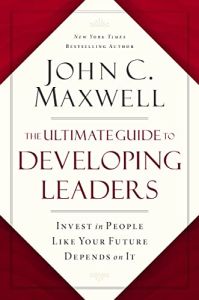
Rejoignez getAbstract pour lire le résumé !
John C. Maxwell
The Ultimate Guide to Developing Leaders
Invest in People Like Your Future Depends on It
HarperCollins Leadership, 2023
Aperçu
Cultivate a leadership pipeline to ensure your organization’s long-term success.
Recommendation
To thrive in today’s fast-paced environment, companies must proactively cultivate leaders who can drive the organization forward. Leadership developer John C. Maxwell’s comprehensive guide provides practical strategies and insightful wisdom for identifying and nurturing leadership potential within your company. Maxwell’s expert approach empowers you to create a culture of growth and excellence, ensuring your organization’s long-term resilience and prosperity. Use these best practices to transform your approach to leadership development and build your company’s future.
Take-Aways
- Develop your next leaders by investing in your people.
- Listen to your team and learn their needs.
- Help your team “excel at their jobs.”
- Identify potential leaders and invite them to the “leadership table.”
- Set goals for new leaders and empower them to take action.
- Motivate leaders to grow.
- Challenge new leaders to work as a team.
- Choose your best leaders to develop and mentor more deeply.
Summary
Develop your next leaders by investing in your people.
To generate organizational growth and overcome business challenges, focus on developing strong leaders. An organization’s growth is directly linked to the growth of its leaders. Invest in leadership development. Marketing, reorganization or cost-cutting will prove ineffective if your company lacks competent leadership.
Organizations with excellent leadership are 13 times more likely to surpass their rivals in critical metrics such as marketability and profit growth. Developed leaders create organizational momentum and foster continual growth. You shape them, and they, in turn, influence, challenge and inspire their teams.
“We cannot reach our potential without the help of others.”
To effectively develop leaders, consistently seek and act upon opportunities to add value to others. While working at LaFace Records, empowerment speaker and leadership coach Sheri Riley mentored her assistant, Tashion Macon. Riley guided Macon’s growth into a successful marketing agency principal while earning a PhD in psychology.
Reflect on the individuals who contributed to your growth, noting the lessons you learned from them. Express your gratitude. Evaluate your commitment to developing others by listing those you’ve mentored, identifying past barriers to their development and creating plans to overcome them. Offer your credibility, strength and experiences to add value to your team members.
Listen to your team and learn their needs.
Leaders must listen to understand and connect with their team members. Listening leads to a deeper comprehension of each individual’s needs, aspirations and perspectives. Effective listening goes beyond merely hearing the words someone says; it involves actively seeking meaning. The late Larry King, a famed talk show host, believed that learning comes from listening rather than speaking. By genuinely listening, leaders build trust and empathy, fostering stronger connections with their team members.
“Your goal is to equip people in such a way that they learn not only to do their job well, but to lead and to develop their own equipping leader’s mindset.”
To improve your listening skills, rate your current skill level on a scale of one to ten. Then, ask five people who know you well to rate your listening ability, too. These scores provide a baseline for improvement. If your listening scores are below nine, identify three situations in which you struggle to listen well and develop a plan to enhance your listening, understanding and retention. Restating others’ words and seeking clarification are suitable methods to try. Ask more questions to increase your understanding of your team’s needs. For example, prepare front-end questions to ask during team meetings and follow up with debriefing and opinion questions. Take notes to recall responses. Gain insights into your team members’ perspectives by inquiring about the aspects of their jobs they enjoy or find challenging.
Help your team “excel at their jobs.”
Once you gain perspective on how your team operates and their professional goals, your job as a leader is to equip them with the necessary mindset and tools to excel in their positions. Be a role model worth following. People feel more inclined to learn and participate in development activities when they see their leaders vesting in personal and professional growth. Spend quality time playing team-building games, facilitating increased interactions, lessons and a shared experience.
“Telling others to do what you haven’t done yourself isn’t equipping. It’s bossing.”
Encourage learning by doing – fostering practical skill development and experience. Remove barriers to growth and create an environment conducive to flourishing, enabling team members to explore and reach their potential without unnecessary constraints.
Identify potential leaders and invite them to the “leadership table.”
Identify potential leaders within your organization. They are familiar with the organization’s performance and culture, which reduces the uncertainty and adaptation time associated with external hires. These internal candidates have already established influence among their peers, a critical component of effective leadership.
When seeking potential leaders within your organization, look for individuals who demonstrate a positive and willing attitude. Seek those with solid character, which is fundamental to maintaining positive attitude traits and trustworthiness. Find those with talent; talent lifts and expands your organization. Evaluate potential leaders’ records and proven ability to produce results and meet goals; this indicates their capability to lead others to success. Remember, the best leaders always want to improve on the status quo: They’re passionate about their goals and are comfortable navigating change and uncertainty.
“The only way for any person to learn leadership is to lead. Leading isn’t a theoretical exercise.”
Immerse your candidates in a leadership environment to teach them the culture of leadership and how leaders think and act. Encourage potential leaders to actively participate in the dynamics of the “leadership table” to foster honest discussion, encouragement and mutual value-addition. Use the power of proximity by creating opportunities for potential leaders to closely observe and learn from the experienced leaders in your organization.
For example, the John C. Maxwell Leadership’s Exchange event brings leaders together for collaborative growth, capitalizing on their sharing valuable leadership experiences. Let new leaders practice leadership in a supportive environment, giving them space to lead and to learn from their experiences. Place potential leaders among people of greater experience to challenge them to enhance their leadership capabilities.
Set goals for new leaders and empower them to take action.
Once your leaders sit at the “table,” give them goals and the power to enact necessary changes. Discuss their core values individually to ensure they demonstrate integrity and authenticity and agree to be held accountable to these values. Evaluate their strengths and weaknesses. Have discussions to help them develop self-awareness.
Create opportunities for your developing leaders to undertake tasks that leverage their strengths, followed by reflective discussions to assess and, if necessary, reassess their abilities. Encourage continuous personal growth. Engage them in group discussions on leadership books, recommend resources such as podcasts and seminars, and challenge them to follow personal growth plans that enhance their strengths and critical thinking skills.
“Only secure leaders give power to others.”
Empower new leaders with the “10-80-10 rule,” which focuses on new leaders’ successful setup, execution and completion of projects. The first 10% involves the leader setting clear objectives, providing necessary resources and offering encouragement without dictating how they should accomplish their tasks. For example, General George S. Patton gave people a goal but never the method.
The middle 80% allows leaders to apply their creativity and influence to realize the vision, adding their ideas, seizing opportunities and facilitating team success. In this phase, encourage leaders to innovate and take charge of directing the team, with you as the guiding leader stepping back. The final 10% involves the guiding leader reengaging to add final value, recognize the team’s efforts and ask reflective questions. The last phase fosters learning from the experience, ensuring a strong finish and highlighting valuable lessons they can apply to future leadership opportunities.
Motivate leaders to grow.
Developing new leaders means teaching them to access the motivation to push forward and grow. Giving your new leaders a purpose, autonomy, collaborative partners and the ability to tap into their drive creates sustainable forward progression. Leaders often discover their drive in a deep-seated sense of purpose – discovering fulfillment in dedicating themselves to a cause greater than mere personal gain. The freedom to chart their own courses and make independent decisions motivates many leaders because it enhances their engagement and output. Leaders develop solid relationships and teamwork as they thrive on collaboration and the shared pursuit of objectives.
“People don’t determine their future. They determine their habits, which determine their future.”
Leaders continually find motivation from the desire for personal growth and excellence in their fields. They value recognition for their achievements and, to a varying degree, the financial security and opportunities success brings.
Challenge new leaders to work as a team.
Once your leaders have the drive, the next step in development involves making them work as a team. Creating a team of leaders boosts organizational resilience and eliminates blind spots. Ensure that leaders align with your organization’s vision and understand how their personal and team goals fit its purpose. For example, researcher Marcus Buckingham’s studies of high-performing teams emphasize that alignment in purpose, excellence, support and future goals creates strong team bonds.
“A lot comes into play to develop a great team. That’s why championship teams are so difficult to create and lead.”
Foster an environment where leaders care for each other, drawing inspiration from teams such as the Navy SEALs, who develop strong emotional ties and commitment to one another by completing challenging missions. Encourage growth among leaders by providing a nurturing environment, recognizing individual growth needs and offering tailored opportunities for development. Position your leaders to complement each other’s strengths and communicate the significance of their contributions, motivating them to see their work as part of a larger, meaningful effort.
Choose your best leaders to develop and mentor more deeply.
Choosing the best of your new leaders involves using the Pareto principle. This principle, applied to leadership, suggests that 80% of results often come from the top 20% of leaders. Focusing your mentoring efforts on the top 20% of your team maximizes efficiency and effectiveness. For example, if you have 10 leaders, concentrate on developing the top two, as they will likely produce the majority of results and will influence and develop others.
Choose your mentees for their potential and commitment. Personalize your mentoring approach to address each leader’s unique needs, strengths and individual growth.
“Good mentors don’t hesitate to have difficult conversations with the people they mentor. They deal with the ‘elephants’ in the room even when others won’t.”
Address mentees’ successes and failures openly and honestly. For example, you might talk about a mentee’s failed speaking engagement, offering constructive feedback. This approach ensures you tailor your mentoring to your mentee’s continuous development.
About the Author
Best-selling author John C. Maxwell founded the Maxwell Leadership program.
This document is restricted to personal use only.











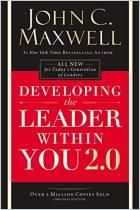
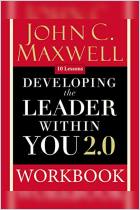
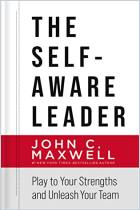






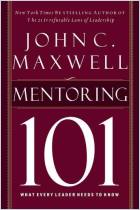















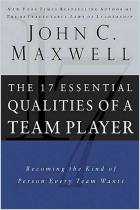


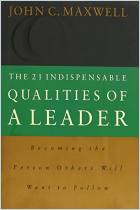

















Comment on this summary